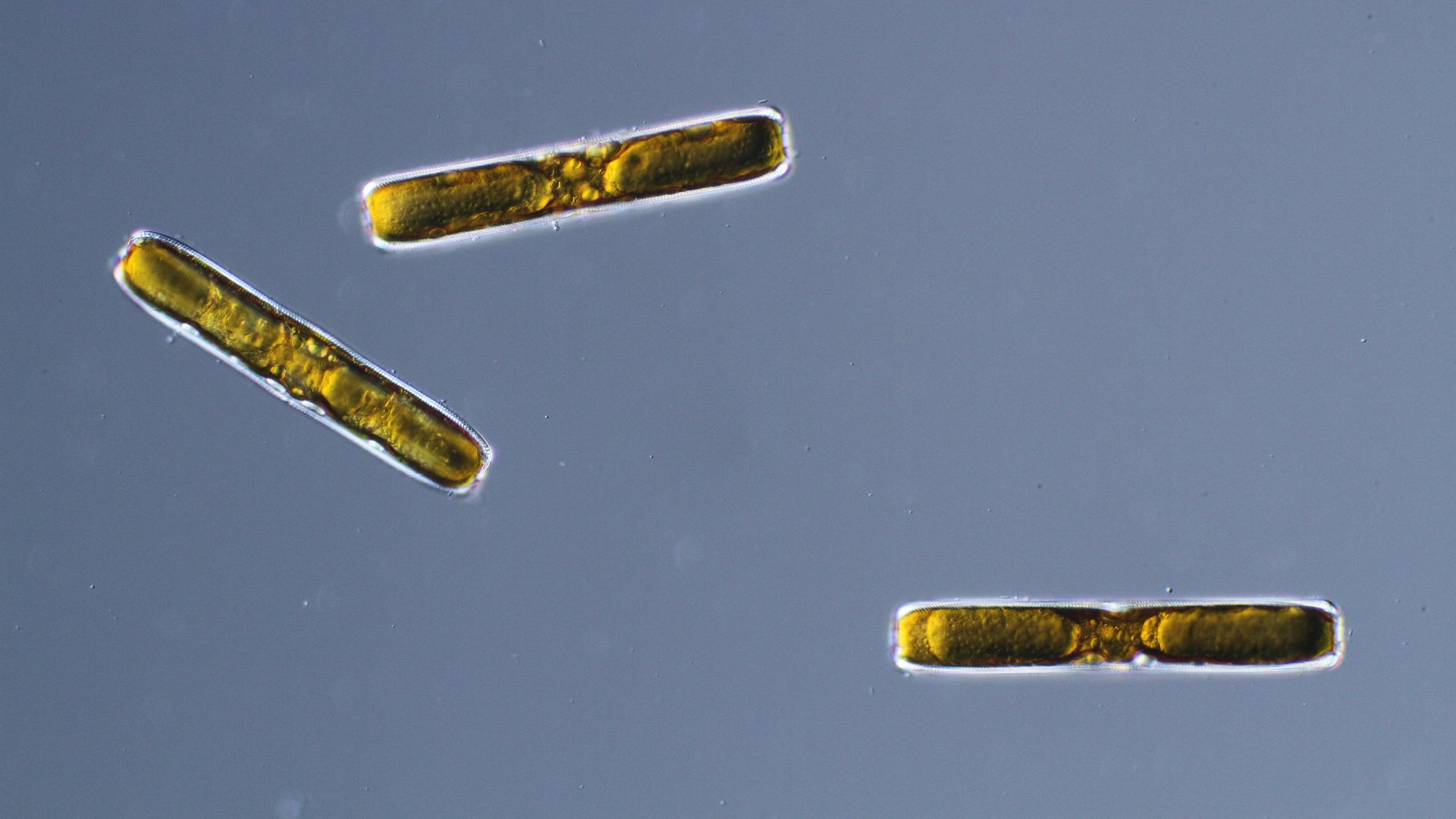Pinnularia nobilis is a diatom. With its ‘glass house’ it is one of the most important oxygen producers on the planet, as well as a useful indicator of water pollution.
Pinnularia nobilis is a diatom. With its ‘glass house’ it is one of the most important oxygen producers on the planet, as well as a useful indicator of water pollution.
Box and lid
Pinnularia nobilis is one of thousands of species of diatoms. Like other microalgae, Pinnularia is part of the phytoplankton and makes sugars through photosynthesis. This releases oxygen, which animals such as humans depend on. Yet, he has something that makes him special: a 'glass house'. This almost indestructible armour is made of silicic acid. It consists of two halves that fit together like a box and lid.
Indicator species
Diatoms are good indicators of high nutrient levels in freshwater. This is called eutrophication. Urbanisation and economic development have led to high levels of eutrophication worldwide. This excess of nutrients is one of the biggest threats to water quality. Eutrophication, caused by run-off of agricultural fertilizer, sewage and other pollutants, feeds the algae and water plants, greatly increasing their density. This causes low oxygen levels in the water which can kill all life in these aquatic ecosystems.
Looking for diatom DNA
Researchers can use the diatoms in the water to determine whether the water is polluted or not. Diatoms are sensitive to very subtle changes in environmental conditions and disturbances, making them ideal indicator species for scientists. Diatoms usually grow better in uncontaminated lakes and rivers. By sampling the water and looking for their DNA, researchers can quickly and cheaply determine the exact diatom biodiversity and corresponding water quality of that specific sample.

